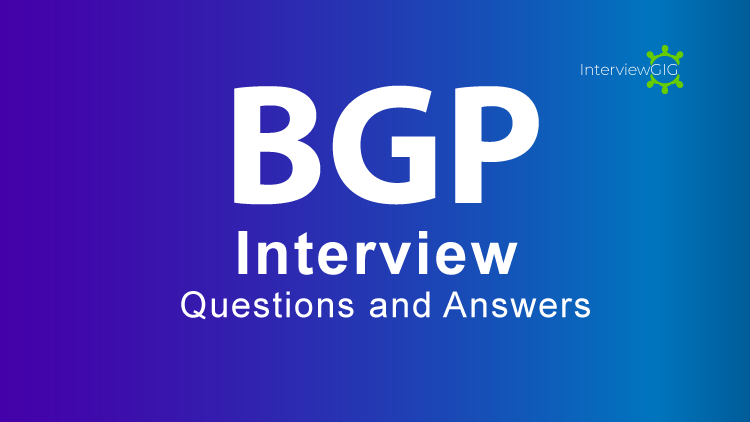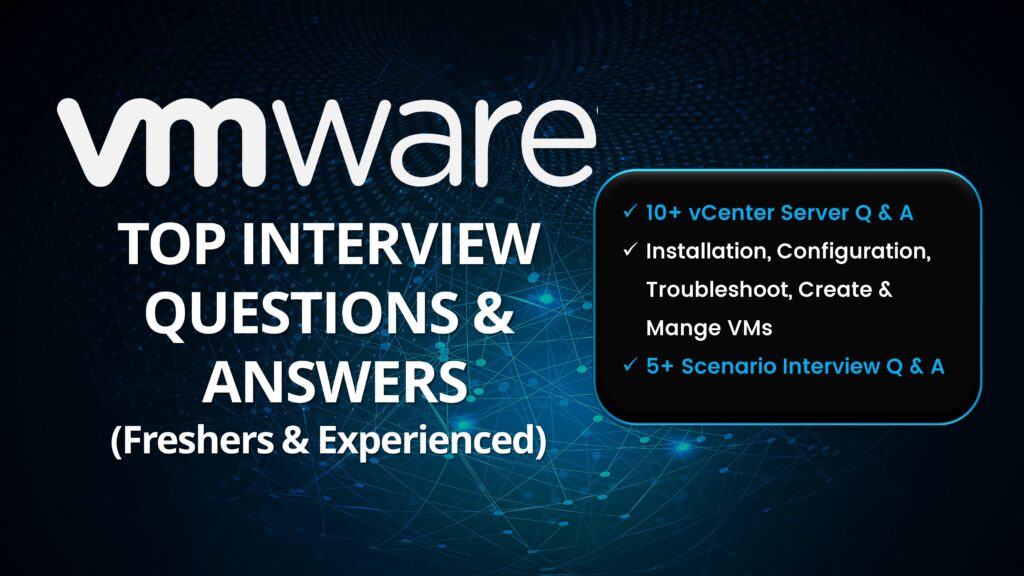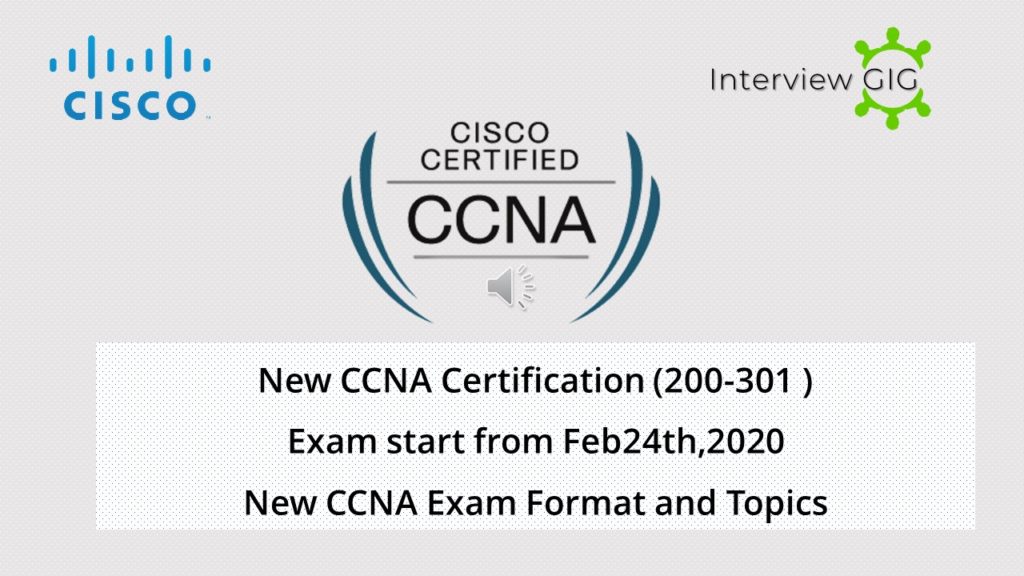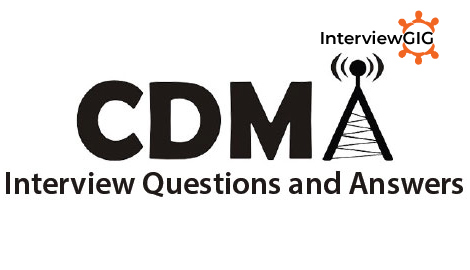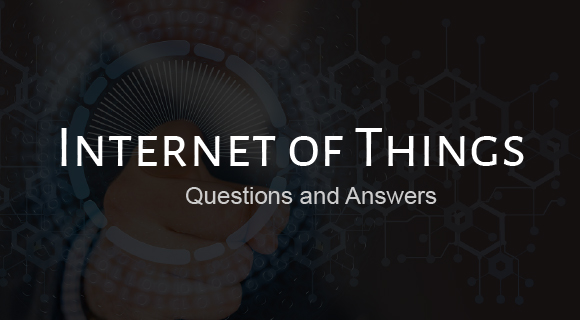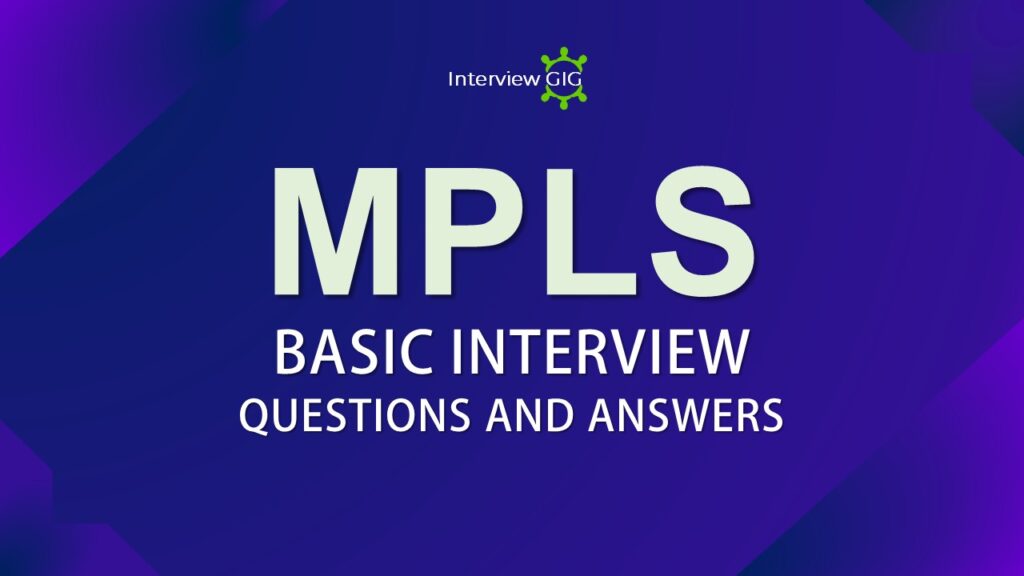What is GSM?
- Short form of Global System for Mobile Communications, is a wireless network system
- A standard for digital cellular mobile communications
- International roaming arrangements are enabled among mobile network operators, by providing the subscribers to use their personal mobile phones anywhere in the world.
- GSM is considered as second generation mobile, as signalling and speech channels are digital
- The carriers can be replaced without replacing mobile phones.
- The ubiquity of GSM implementations is also enabling the switching between network operators, who can choose equipment from many GSM equipment vendors.
- GSM pioneered low cost SMS implementation
- The GSM standard includes a worldwide emergency telephone number feature.
Can you explain the services offered by GSM?
- The services offered by GSM are ISDN compatible
- GSM allows synchronous data and asynchronous data to be transported as bearer service, one of the telecommunication services offered by GSM, and forms ISDN terminal
- The data could be either transparent service or nontrans parent service
- Telephony is one of the services offered by GSM, which an emergency and the service provider is notified by dialling 3 digits
- By using appropriate fax adaptor, G3 fax service is supported
- One of the features of GSM is Short Messaging Service
- Certain services, namely supplementary services are provided on top of teleservices or bearer services by GSM, such as, caller identification, call forwarding, multiparty conversations, barring outgoing calls and call waiting.
What is the maximum data rate supported by a GSM system?
- The maximum data rate supported by a GSM system is 9.6 kbps.
- However, there are extensions to GSM standard to improve throughput.
- GPRS is one of the extended GSM service.
- The extended standards of GSM allow theoretical data rates on the order of 114 Kbit/s, but with throughput closer to 40Kbit/s in practice
Explain the GSM techniques in Sectorization of a cell?
- Sectorization is a process to cut down equipment costs in a cellular network. It influences in traffic load and cell size
- Sectorization reduces co-channel interference, when applied to clusters of cells
- The maximum traffic capacity of sectored antennas is more than omnidirectional antennas.
Explain the GSM techniques in Frequency Re-use?
- Frequency re-use is the key factor of cellular network ability for increasing both coverage and capacity.
- Different frequencies are utilized by adjacent cells; however, problem does not arise to determine the cell sufficiently far apart using the same frequency.
- Reuse distance and the reuse factor are the two elements that influence frequency reusability
- The frequency is 1/K, where K is the number of cells that cannot use the same frequencies for transmission.
Explain the GSM techniques in Transmitted Power Control?
- Transmitted power control is one of the technical mechanism used within some networking devices
- TPC is used for preventing too much unwanted interference among wireless networks
- The central idea is to automatically reduce the transmission output power used, when other networks are within the same range.
- TPC reduces interference problems and increases the battery capacity
- The power levels of a single mobile device can be reduced by 6dB
Explain the GSM techniques in Discontinuous Transmission?
- Discontinuous Transmission, also known as DTX in short is a method of momentarily powering down a mobile set when there is no voice input to the set.
- The overall efficiency of a wireless voice communication system is optimized by DTX.
- Each speaker in a two-way conversation speaks slightly less than half of the time.
- The workload of the components in the transmitter amplifiers are made easy and reduces interference.
Which uplink/ downlink spectrum is allocated in GSM – 900 and DCS – 1800?
- GSM – 900: Uplink spectrum is 890.2–914.8 and downlink spectrum is 935.2–959.8
- DCS – 1800: Uplink spectrum is 1710.2–1784.8, and downlink spectrum is 1805.2–1879.8
Name the algorithms used in Ciphering and Authentication?
Ciphering
- The algorithm 129-EEA3 and 128-EIA3, 3GPP Confidentiality and Integrity Algorithm is used for ciphering in GSM
Authentication
- The algorithm by name A3 is used for authentication in the GSM systems
- This algorithm is used in implementing Subscriber Identity Module.
Can you explain Equalisation?
- An adaptive equalizer is employed by a GSM receiver for overcoming the impact of non-ideal channel characteristics which are caused by multipath propagation.
- Adaptive equalizer is required because the channel characteristics are often changing fast.
- Tuning the for each time slot is done by the equalizer.
Can you explain Interleaving?
- Time diversity in a signal communication system is obtained by using Interleaving.
- The possibility of losing whole bursts will be decreased by interleaving
- Total 456 bits from convolution encoder, including 20ms of speech, is subdivided into eight blocks. Each block consists of 57 bits.
- All these blocks are transmitted in consecutive time slots.
- Enough information is available in 7 blocks, in case one of the blocks is lost due to burst errors. This enables whole segment recovery by using error correction.
Can you explain Speech coding?
- Speech coding is all about turning voice into digital form
- Speech is inherently analog, as GSM is a digital system.
- The digitization is employed by ISDN, and the current telephone systems that are used for multiplexing voice lines, with high speed trunks, optical fiber lines is done by Pulse Code Modulation(PCM)
- The PCM output is 64 kbps, which is too high over a radio link in feasibility
- The 64kbps signal is redundant
- The algorithm used in conventional cellular is Vector Sum Excited Linear Predictive speech compression.
Can you explain Channel coding?
- The data rate for the radio channel is 270 kbps
- The data rate is split into 8 full rates or 16 half rate traffic channels, along with signaling channels
- In order to have the maximum chance for detecting and correcting errors, the code is complex in a typical propagation path
- Forward Error Correction is applied in order to get the speech coder encryption, coding and interleaving in a sophisticated way
- The data is sent as bursts in 577 mus time slots. Each contains 116 encrypted bits
- Every TDMA frame consists of 8 or 16 time slots
- Transmit time slots are staggered, so that at some instant the mobile station will not receive the same instants while transmitting, which enables the simplifying the filtering requirements
- At least one spare slot between transmit and receive is available with this scheme.
What is frequency re-use?
- Frequency Reuse is one of the techniques for improving capacity and spectral efficiency
- Commercial wireless systems are based on Frequency Reuse, that involves the partitioning of an RF radiation area into cell segments.
- A frequency that is far enough away from the frequency in the bordering segment is used by one segment of the cell.
- Similar frequency is used at least two cells apart from each other.
- This practice enables various cellular providers to have several customers for a given site license.
What are the interfaces between BTS and MS?
- Base station subsystem is a segment of cellular telephone network that is responsible for setting signals and traffic between mobile phone sets and network switching subsystems.
- Transcoding of speech channels are carried out by BSS. BSS allocates radio channels to mobile phones, paging, transmission and reception over the air interface and many other tasks that are pertaining to the radio network.
What are the interfaces between BTS and BSC?
- Base Station Controller provides the intelligence behind the BTSs. A BSC controls hundreds of BTSs.
- Allocation of radio channels, receiving measurements from the mobile phones are some of the major task handlings by BSC.
- BSC controls BTS to BTS.
- BSC acts as a concentrator in which many different low capacity connections to BTSs will become reduced to few numbers of connections towards the mobile switching centre.
- BSC provides the required data to operation support subsystem(OSS) and also to the performance measuring centres
- BTS supports the key features like, frequency hopping, sectorization, and GPRS.
- The expansion and upgradation in the field are the features emphasized during its design.
- The power output of BTS is up to 80W.
What are the interfaces between BSS and MSC?
- BSS will send the called number to MSC (Mobile Switching Center)
- MSC checks the VLR and queries BSS for allocation of resources for the cell
- Then MSC routes the call to GMSC
- Switching nodes for base station controls is done by MSC
What are the interfaces between TRAU and BSC?
- TRAU (Transcoder and Rate Adaptation Unit) is an entity to perform a transcoding function for speech channels and RA (Rate Adaptation) for various data channels.
- BSC and TRAU does not demand specific environmental conditions to perform operations.
- With this the operator has an option for placing any one or both units at a central location.
- BSC supports various BSC-BTS configurations like star, multidrop and loop, and star configurations towards TRAU
- TRAU is a standalone unit which could be located close to a MSC (Mobile Switching Center), which enables the optimum utilization of 16 kbit/s channel sub multiplexing and saves line costs.
What are the interfaces between BSC and PCU?
- The Packet Control Unit is an adaptor / handler unit which enables GPRS and EDGE functionality within Radio Access Network.
- The BSC from the GSM network is connected with packet core by PCU
- Motorola PCU is based on certain industry standards like Compact PCI and is highly scaleable.
Can you explain Cell Splitting?
- The process of dividing the radio coverage of a cell site within a wireless telephone system into new cell sites is known as Cell Splitting
- Additional capacity within the region can be achieved by using Cell Splitting
Can you explain WPS?
- The wireless equivalent of the Government Emergency Telecommunications Services is referred to WPS.
- WPS provides access based on the priority to wireless telephone service during emergencies
- Certain governing bodies such as authorized federal, officials of state and local, and certain key private sector officials can be put first in line for an open cellular channel by dialing 272 just before entering the number being called
- It is T-Mobile, which began offering an initial operating capability in New York and Washington and had it deployed later.
Can you explain MA?
- The Absolute Radio Frequency Carrier Number is used in hopping sequence pattern are determined by certain contents of the test set’s Mobile Allocation Table.
- The hopping sequence beginning point is known as Mobile Allocation Index Offset.
- The first entry of Mobile Allocation is corresponding to zero.
- An MA table is a list of ARFCNs. They present in Cell Allocation Table which shares the same frequency band
- A separate MA table is allocated for each frequency band.
Can you explain MAIO?
- Mobile Allocation Index Offset is applied to same timeslot of different TRX.
- Every time slot will have a separate / different MAIO, as they are using the same HSN
- In case all time slot has the same HSN, their sequence need to be started at different frequencies
- The MAIO will set the index of the sequence for each timeslot.
- The HSNs do not run the same pseudo random sequence at the same moment.
Can you explain Synthesised Frequency Hopping?
- The GSM’s number of frequencies is 124
- When the operators do not have enough frequencies, the range to be used is CDS 1800
- Frequency hopping is used when the frequencies used are more with high interference.
- Frequency hopping is utilized to equalize interference for the frequencies that are used in their range.
- One of the frequency hopping’s is Synthesised Frequency Hopping
- Synthesized hopping allows the transmitter to change its frequency based on time slots. Because of this process SFH is known as fast hopping.
Can you explain Base Band Frequency Hopping?
- Base Band Frequency Hopping is one of the frequency hopping techniques.
- Time division multiplexing mapping is used in BBFH
- BBFH is supported by a base station having a broadband transceiver
- Physical channels are permitted by BBFH based upon mobile subscribers’ communication with the base station.
- In this, static transceiver frequencies are used while operating with broadband transceiver. This method is an exclusive of switching communication signals between transceivers.
Can you explain Cycling Frequency Hopping?
- In Cycling Frequency Hopping, the frequencies are changed, in every TDMA frame.
- For ex: f1,f2,f3 …. Where f1,f2,f3 are frequency hopping sequence numbers
- The specified setting parameter is HSN.
- Hopping Sequence Number is set to 0 in a cyclic sequence hopping
- The sequence of frequencies starts from the lowest absolute frequency number in a set of frequencies specified for a specific channel group, to highest absolute frequency number.
Can you explain HSN?
- Hopping sequence number is utilized, to spread the interference between all cells that uses the same hopping TCHs
- The correlation between closely located cells can be avoided by using HSN
- HSN of zero corresponds to the cyclic hopping sequence, and 1 through 63 corresponds to various pseudo random patterns.
Can you explain DTX?
- Discontinuous Transmission is one of the methods which is based on the advantage of the fact that a person speaks less
- Nearly 40% of time in general conversation, the transmitter is turned off during silence periods
- Mobile phone power conservation is an added benefit of DTX
- Voice Activity Detection is the most important component of DTX
- DT X distinguishes between voice and noise inputs.
- The transmitter is turned off when a voice signal is misinterpreted as noise. This causes annoying effect known as clipping is heard at the receiver’s end
- Comfort noise is created at the receiving end, in order to ensure the non-connection.
Can you explain DRX?
- DRX is referred as driver receiver.
- DRX performs the transmission and reception of signals
- Sends and receives the signals to or from higher network entities, as in base station controller in mobile telephony
Can you explain TRX?
- The transceivers allow to serve several frequencies and different sectors of the cell
- Sends and receives signals from / to higher network entities.
What do you mean by Erlangs?
- Total traffic volume per hour / 3600 seconds is described by erlang
- For example, 60 calls in one hour and each lasting 5 minutes results the following:
Minutes of traffic in an hour = Number of calls x Duration
Minutes of traffic in an hour = 60 x 5 = 300 minute
Hours of traffic in the hour = 300 / 60 = 5 hrs
The traffic figure = 5 erlangs
What do you mean by GoS?
- Grade of Service is a probability of a cell in a circuit group which is blocked / delayed for more than a specified interval
- GoS is expressed as a vulgar fraction / decimal fraction
- It is with reference to the busy hour at the time of greatest intensity of the traffic
- GoS may be viewed independently from the perspective of incoming vs outgoing calls
- The GoS is not essentially equal between source to destination pairs.
